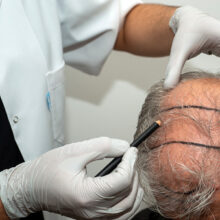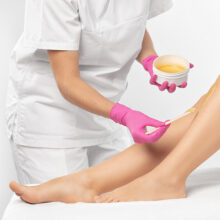The ABCDEs of Melanoma: What You Need to Look For
- Published: Wednesday, October 5th 2016
- in Beauty
- by Jackie Burns Brisman
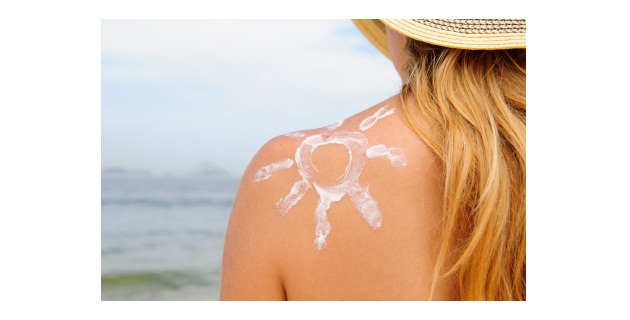
Melanoma Awareness is a cause near and dear to our hearts at SpaFinder. After spa industry colleague and friend Alex Szekely, former president of Golden Door and Rancho La Puerta, died of melanoma at the young age of 44, SpaFinder President Susie Ellis made it her mission to educate others about awareness and prevention of this serious cancer. Scroll through to learn the ABCDEs of melanoma, brought to us by the Skin Cancer Foundation.
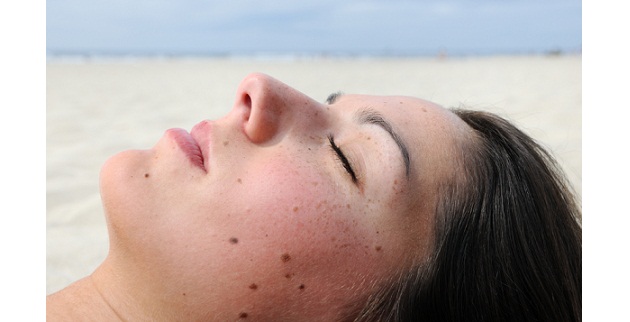
Early Detection Can Save Your Life
Melanoma, the most dangerous form of skin cancer, accounts for 75 percent of deaths from skin cancer each year, according to the Skin Cancer Foundation. However, melanoma rarely strikes without warning signs, which, when found early, make the cancer almost always curable. Regular skin checks are a great way to detect the cancer in its early stages. Moles, brown spots and growths are not always just harmless marks on the skin. If you have more than 100 moles on your body, you are at a greater risk and should definitely read on!
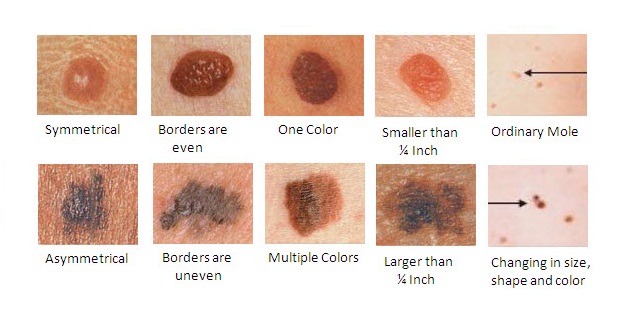
The ABCDEs of Early Detection
Using the first five letters of the alphabet, the Skin Cancer Foundation devised an easy way to guide us through the early warning signs of the cancer.
A – Asymmetry (if you draw a line through the mole the two sides won’t match)
B – Border (early melanoma moles have uneven edges)
C – Color (a variety of colors or shades of brown, tan or black is a warning sign; melanoma can also turn red, blue or some other abnormal color)
D – Diameter (melanomas are usually larger in diameter than the size of a pencil’s eraser – ¼ inch – but they may also be smaller when first detected)
E – Evolving (any change in size, shape, color, elevation or other trait – new symptom such as bleeding, itching or crusting – is a major red flag)
Know your skin! Caught in early stages, melanoma is almost 100 percent curable!

Am I At Risk?
If you answer yes to any of the following questions, you may have a higher risk of developing melanoma:
1. Is there a history of melanoma in your family?
2. Do you have light eyes and skin?
3. Have you had one or more severe sunburns?
4. Do you frequently spend time in the sun between the hours of 10 a.m. and 4 p.m.?
5. Do you live in the southwestern U.S.?
6. Do you have many freckles?
7. Have you been exposed to UV radiation from tanning beds?
Prevention & Protection
According to the Skin Cancer Foundation, “melanoma may be triggered by intense, intermittent sun exposure.” In the past 20 years, the number of melanoma cases has nearly tripled thanks to more time enjoying outdoor activities with less clothing and less sun protection, as well as the millions of Americans who visit indoor tanning salons regularly. Protect yourself! When you are in the sun, wear appropriate clothing, cover your head with a wide-brimmed hat (the head and neck are some of the most commonly overlooked places), wear sunglasses and ALWAYS put on sunscreen with an SPF of 15 or greater. Limit your sun exposure between the hours of 10 a.m. and 4 p.m., and by all means, forever avoid tanning beds. If a dark tan is a must, invest in self-tanners or go for a spray tan. Also, new research has shown that Vitamin A may lower the risk of melanoma, so don’t shy away from taking a multi-vitamin!
Editor’s Note: This article was originally published May 7, 2012
Jackie Burns Brisman
About the author: Jackie Burns Brisman
Jackie has been a featured beauty expert at HBA Global and has appeared live on CBS New York, Good Day Baltimore, and more. Her work has appeared in Spafinder, Skincare.com, American Salon, L'Oreal Paris Beauty Magazine, Well-Rounded, Spa Professional Mexico, MTV News, and more. Prior to joining the Spafinder team she spent time at Women's Health Magazine.


